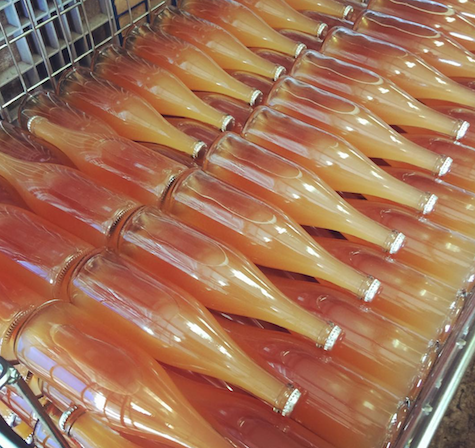
A Pet Nat (short for pétillant naturel) is a sparkling wine from a single vintage that undergoes a single fermentation.
The wine ferments with its own yeast in tank or barrel and is transferred to bottle before the process is completed (with the latent sugar and native yeast combining to continue the ferment).
The fermentation continues in the bottle without addition of yeasts, enzymes or sugar until it finishes. In the process, it creates carbon dioxide.
The wine is then usually disgorged off its solids (heavy lees) and topped up with the same wine. Occasionally, pet nats are undisgorged.
There is no dosage, no other filtration, and no sulphur addition.
This method differs from methode champenoise in that the latter undergoes a secondary fermentation activated by the addition of a liqueur made of sugar and yeast, and normally requires a lengthy period of ageing on the lees.
Pet Nats are normally released in the spring. Some examples are kept for an extra period of time on the lees and released in the autumn.
This method differs from methode champenoise in that the latter undergoes a secondary fermentation activated by the addition of a liqueur made of sugar and yeast, and normally requires a lengthy period of ageing on the lees (from 18 months to 5 years).
It also differs from ancestral method sparkling wines in which the fermentation is re-activated by the addition of grape must.
According to the vintage, pet nats can be brut nature (ie no sugar) or off dry.
Almost invariably from organically-farmed, hand-harvested fruit, the wines are not too fizzy either, being more on the frizzante side with little pearls of sparkle. The pressure in the bottle is normally under 3 bars, hence they can be sealed with a crown cap, rather than the traditional champagne mushroom cork and cage.
There’s no dosage in a pet nat, so there’s none of that champenois style sweet-sour aftertaste. Pet Nats are often light in alcohol, and furthermore are natural because there is low or zero-added sulphur added.

